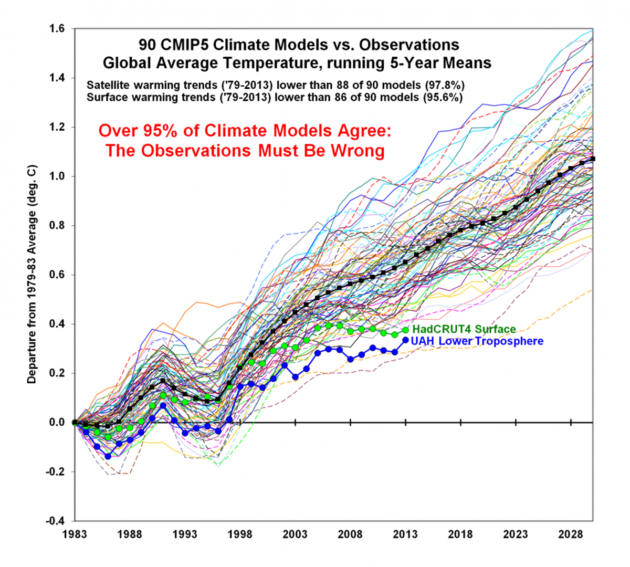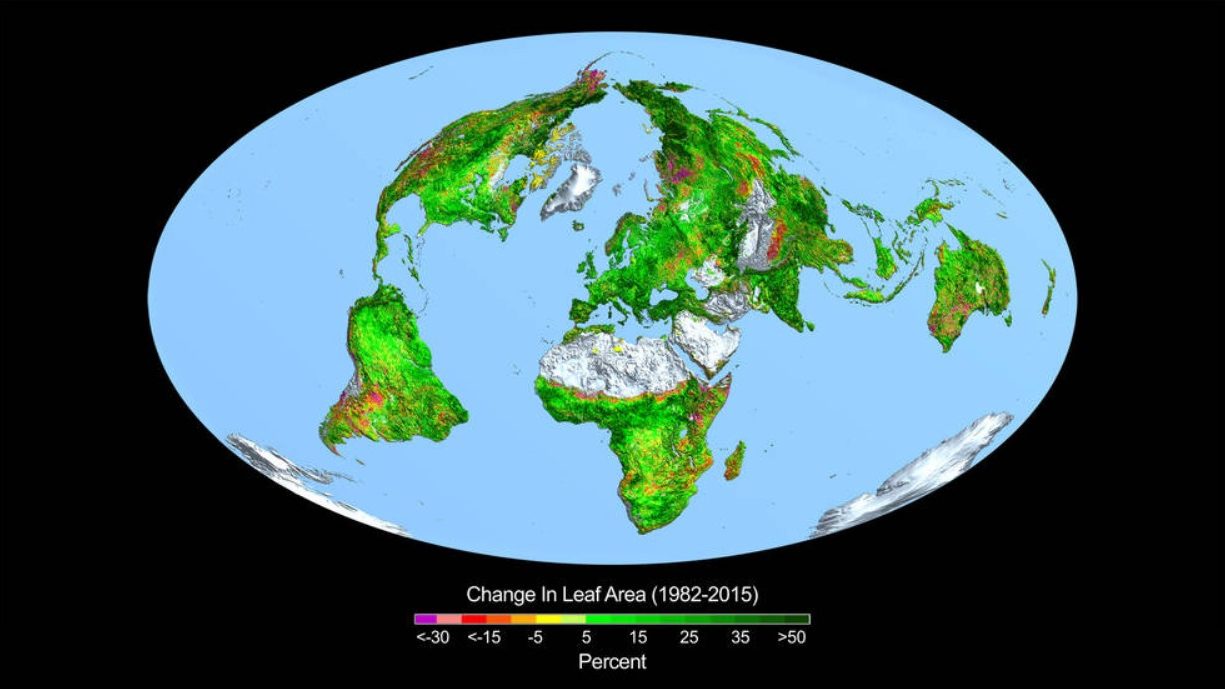Whenever you’re being regaled with a climate alarmist’s latest hysterical claim that the entire planet is on the cusp of being roasted to a cinder, the most important thing to keep in mind is that they’re almost certainly not talking about the real world. Instead, their scaremongering is almost certainly based on projections and computer models. If any real-world data is allowed to intrude, it’s been “adjusted” to within an inch of its life.
Computer models are not the real world, any more than Google Earth is an actual place. Climate models are Matrix-like simulations… if the Matrix were a Donkey Kong style, 8-bit world of badly-rendered coloured blocks.
Climate models are in fact pretty lousy at simulating the real world. Which is why they have continually ‘run hot’, overestimating the amount of warming the world would actually see. Certainly, climate models are sophisticated computer simulations, but when it comes to sophistication, the real world knocks them out of the park. For instance, climate models still cannot accurately model what one might think is a pretty important factor: clouds. Recent analysis suggests that models underestimate the cooling effect of clouds.
Now another study argues that models are underestimating the effect of vegetation on carbon dioxide absorption – and hence, climate.
Most Earth system models agree that land will continue to store carbon due to the physiological effects of rising CO2 concentration and climatic changes favoring plant growth in temperature-limited regions. But they largely disagree on the amount of carbon uptake…[Reseach] suggests that most models largely underestimate photosynthetic carbon fixation and therefore likely overestimate future atmospheric CO2 abundance and ensuing climate change.
This is important. Almost no one disagrees that atmospheric carbon dioxide affects the Earth’s climate to some degree. But everyone also knows that carbon dioxide is essentially ‘plant food’. Indeed, it is well known that the recent rise in atmospheric carbon dioxide is correlated with a ‘global greening’ as the Earth’s vegetation increases. In turn, these new plants consume more CO2 – a process known as “enhanced photosynthetic carbon fixation”, or Gross Primary Production, GPP. The question, though, is how much does the ‘greening’, if any, offset increased carbon emissions, and how will this affect climate?
Predicting climate change requires knowing how much of the emitted CO2 (currently ~40 Pg CO2 yr–1) will remain in the atmosphere (~46%) and how much will be stored in the oceans (~24%) and lands (~30%)…[these might] help to reduce uncertainty in multi-model projections of terrestrial carbon cycle entities.
The great boreal forests of Canada and the Russian Taiga are some of the most forested on Earth and have shown a distinct trend of increased leaf cover in recent decades.
This study is focused on the northern high latitudes (NHL, north of 60°N) where significant and linked changes in climate and vegetation have been observed in the past 3–4 decades…We therefore hypothesize that the greening sensitivity (i.e., leaf area index, LAI, changes in response to changes in the driver variables) inferred from the historical period of CO2 increase can be used to obtain a constrained estimate of future GPP enhancement from both the radiative and physiological effects.
…the available longest records of carbon exchange between the land/ocean and atmosphere (1980–2015) indicate that NHL lands changed from being a small carbon source in the early 1980s to a strong sink in the mid-2010s.
The question is, of course, are climate models accurately reflecting this trend? The answer is no. Most (CESM1-BGC, NorESM-ME, and CanESM2) strongly underestimate the amount of CO2 that global greening is scrubbing from the atmosphere. Some models overestimate. Only one (MIROC-ESM) matched the carbon-absorption data with any reliability.
The tendency for GPP underestimation in NHL by models reported here is also seen at the global scale This, together with another recent study, suggests that most models are underestimating photosynthetic carbon fixation by plants and thus possibly overestimating atmospheric CO2 and ensuing climatic changes.
nature.com/articles

There’s that “settled science” again.

